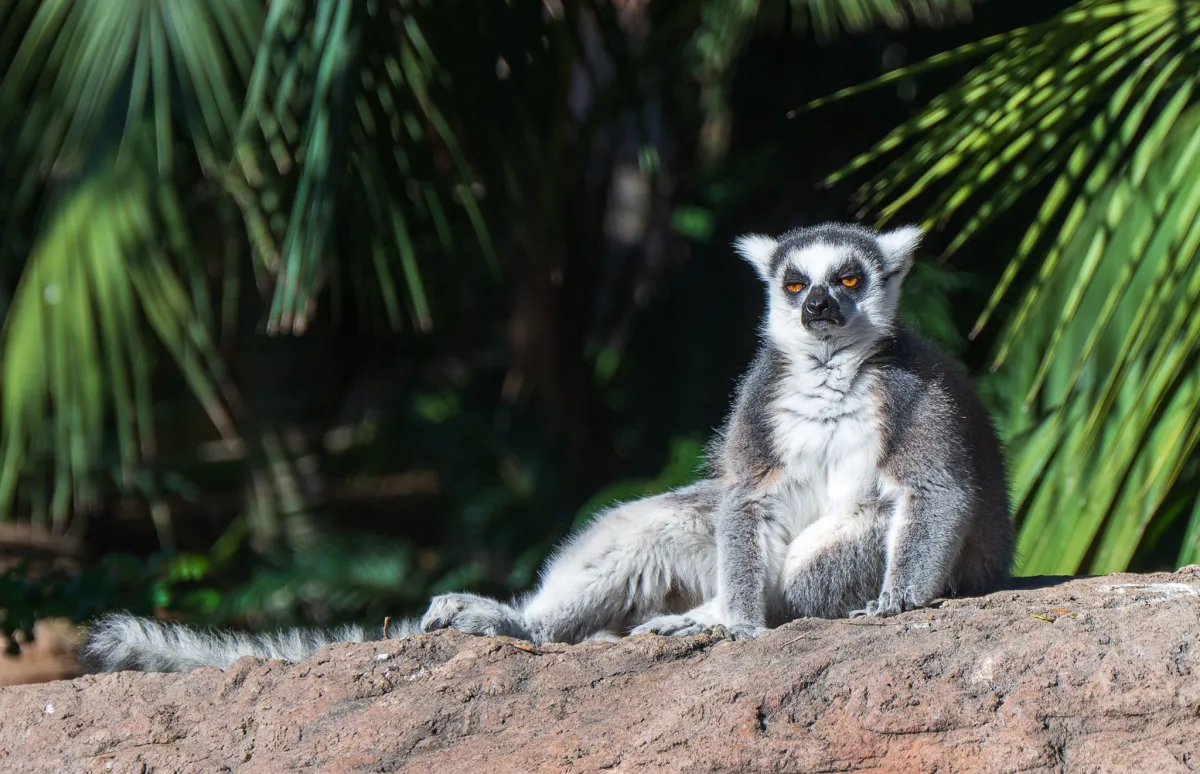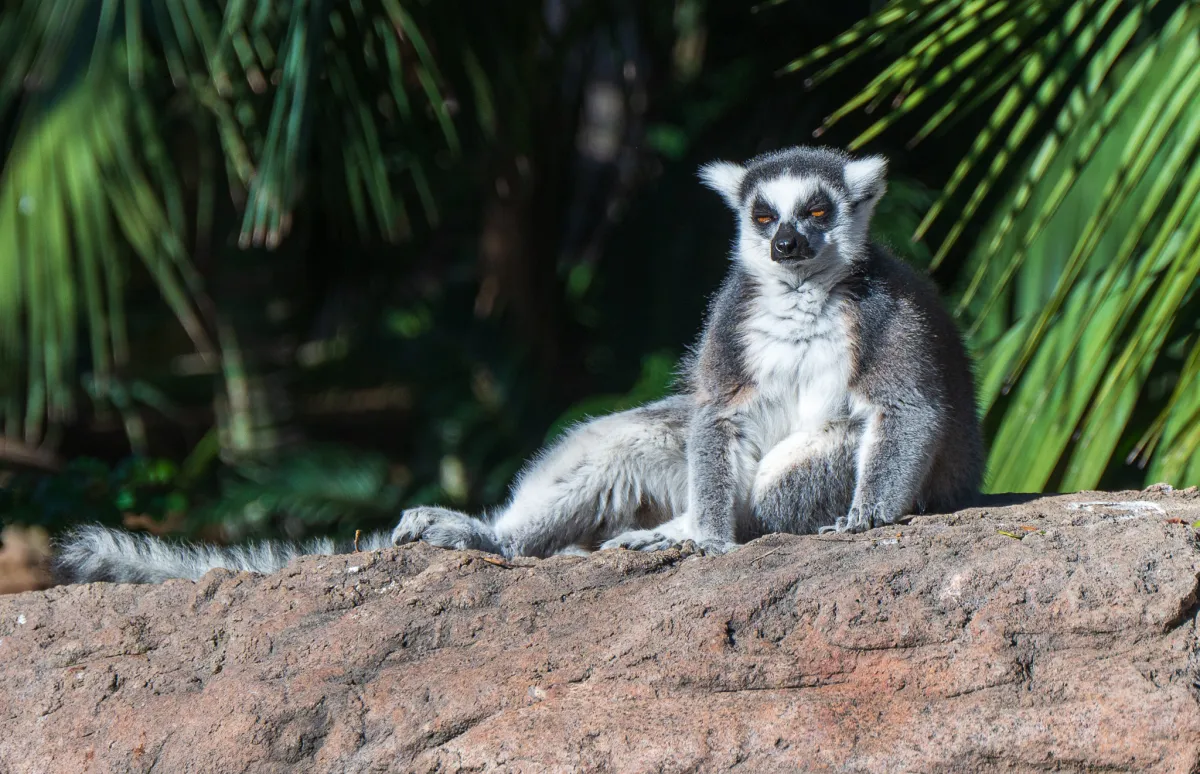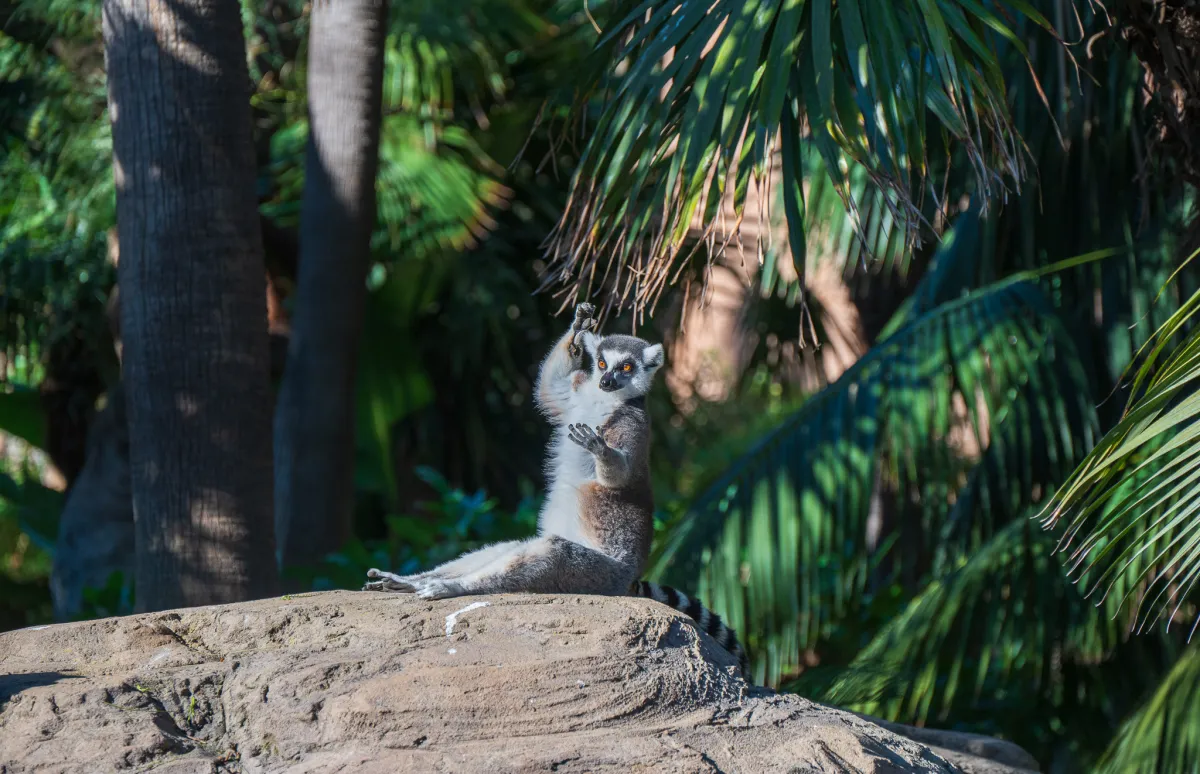I love watching these adorable creatures with their bright eyes and fascinating facial expressions.

The Ring-tailed Lemur, Lemur catta, is a medium-sized wet-nosed primate and is endemic to the island of Madagascar. It is listed as ‘endangered’ by the IUCN.

The Ring-tailed Lemur is highly social, and they often live in groups of up to 30 individuals. It is also a female-dominant species, a commonality among lemurs.

These primates are strictly diurnal, active exclusively during daylight hours. They also like to sunbathe and can invariably be observed sitting upright on their tails, their white bellies towards the sun. They will also often have their palms open and eyes part or even fully closed. It makes them look like they are just dozing off when you watch them for a while.

Their numbers have been in decline due to habitat destruction, local hunting for bushmeat and the exotic pet trade. Fortunately, they are one of a dwindling number of rare species not captured for use in ancient and mostly dubious ‘medicinal’ potions in Asia.





There are more than 2,000 captive-bred lemurs in various zoos and conservation centres worldwide, but possibly now only around 2,000 in the wild.

Endemic to southern and southwestern Madagascar, the Ring-tailed lemur inhabits deciduous forests, dry scrub, humid forests and forests along riverbanks. It strongly favours gallery forests (forests along riverbanks), but these have now been slowly but surely cleared from much of Madagascar in order to create pasture for livestock.

Location: Bioparc Fuengirola, Spain